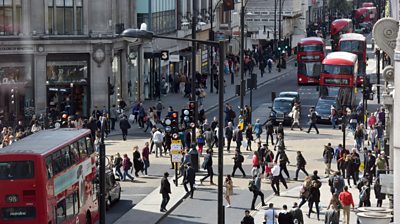What Can Go Wrong?
- Road traffic accident – causing or being caught up in a vehicle accident
- Slips / trips – within the production team, or causing these to members of public
- Personal security – crimes to the person or opportunist theft by members of the public
- Air quality – exposure to road traffic pollutants
- Noise – exposure to road traffic noise
- Fire safety – causing fire / explosion or impeding those escaping from buildings.
Legal/91�ȱ� Requirements
- In the UK, the requirements of the Highway Code should be observed - failure to do so potentially exposes the individual, and their managers, to risk of prosecution by the Police. Overseas, local road traffic rules / regulations will apply but the duties of care under safety legislation remain.
- Local Authorities are responsible for managing and maintaining many public spaces, including roadside pavements and other pedestrian areas – some LA’s require production companies to obtain permits from them before allowing filming or recording in these locations.
Control Measures
General Safety
- Check with the Local Authority what permissions, if any, are needed to film / record in the chosen location and how these are obtained – observe any conditions they impose
- When setting up vox pops with members of the public, choose a safe location in which to stop and film / record them, for example, avoid busy vehicle driveways, public car parks, part pedestrianized areas with service vehicle access, etc. Obtain appropriate consents to use their contribution, explaining the purpose of your filming / recording and any risks involved (e.g. unusual tastings, magic tricks played on them, etc.)
- Do not create slip / trip hazards on pavements / pedestrian areas, for example, from trailing cables, trackway for dolly shots, leaving production equipment such as camera cases unsupervised – if these can’t be avoided, take steps to warn pedestrians and keep them clear of them, use radio-mic links instead of trailing cables, etc.
- Try to film / record in a location where there is plenty of space for pedestrians to get around you – if you obstruct pedestrians, they may step into the road to pass you (placing them at risk of significant injury) or it could just make them hostile towards you
- In very busy pedestrian areas, try to avoid filming or recording when on the move – statically held positions make you more easily seen / avoided by members of the public. If tracking / steadicam shots are required, use a backwatcher to guide the cameraman away from members of the public and consider need for these crew to wear haz vests.
- If the filming / recording location is outside, make sure the team are appropriately dressed for the weather conditions – check forecasts in advance and warn them what to expect.
Road Traffic Safety
For work beside public roads where there is no intention by the production to stop or control the free movement of road traffic vehicles:
- Where practical, choose a location which is away from busy and fast moving roads / streets, or if necessary, try to film at times when the traffic is less busy (though be cautious of working in conditions of poor lighting or poor weather when you may not be easily seen by road users). When choosing your location, try to avoid having your team need to repeatedly cross busy roads, particularly where safe crossing facilities aren’t provided. It is illegal to stop on the hard shoulder of a motorway unless in an emergency or your vehicle has broken down
- Take steps to avoid obstructing or distracting road users, for example, avoid using bright lights, do not leave production equipment on vehicle access routes and do not park where it causes an obstruction to other road users (including disabled parking bays). News crews should not leave their vehicles in the road during traffic jams to film / record incident sites – they must find a safe and legitimate place to park first, which does not include the hard shoulder of motorways.
- When parking more than one vehicle on the roadside and there is a need to work / access between them, there should be a good gap between the vehicles and the vehicle nearest to oncoming traffic should park with its wheels turned in. If space does not allow this, either avoid working between them or park somewhere more suitable.
- High visibility vests / tabards should be worn by crews where the risks of road traffic accident justify the need, for example, when the team need to work in areas where traffic and pedestrians are not well separated (e.g. public car parks, lay-bys, local lanes, lorry haulage yards, etc.), or they need to cross busy public roads regularly, or when working beside roads in conditions of poor visibility e.g. at night, in fog, rain, etc.
When the production need regular and unrestricted access to a public road location where it would be too dangerous to proceed without stopping or controlling traffic flow, for example, when the action requires actors or film crew to be in the road (e.g. drama productions):
- Liaise with the local Police and the Local Authority to decide what is achievable in terms of road closure or traffic control options – for some roads, neither of these will be an option, but where they are, strict conditions will likely be imposed, including the nature of control / closure and the period over which this can occur. Police presence may be required which will need to be paid for; traffic management companies can provide people and equipment to either close or control road traffic – the production cannot simply go ahead and do this for themselves, even for very short periods. If you know any kind of road closure / control is going to be required, try to arrange it well in advance as it can take time to set up, requiring consultation with a number of bodies including the Highways Agency, emergency services and possibly also local residents / businesses.
- Many of the requirements imposed when closing or controlling traffic on public roads can be avoided if the action can be achieved on a suitable privately owned road (e.g. old runway, disused road, large driveway, etc.) – once landowner permission is obtained, control of the road is easily co-ordinated by the production team.
Noise
- Busy roads and streets and those with fast moving vehicles can seem very noisy (especially to your sound operator), but they are very unlikely to present a significant risk of hearing damage (temporary or permanent), even for those working in such areas all day
- Where there is cause for concern however, hearing protection measures (ear-plugs or muffs) are easy to use and can be obtained from the Safety Stores (see Related Topics); but before adopting them, consider whether use of these devices could create other risks (e.g. failing to hear an on-coming vehicle, or to react to verbal instructions / warnings, etc.).
Fire / explosion
- Avoid filming / recording in petrol station forecourts unless you have the permission of the petrol station manager. There is a very small risk of fire / explosion if a spark created in our electrical equipment ignites fuel vapour, as could happen, for example, during petrol tanker loading when the fuel being loaded displaces flammable vapour from the main holding tanks
- Many premises have their fire escape exits emerging into public spaces such as pavements. Often unused for other purposes, these recessed doorways can provide a convenient shelter from the weather or somewhere to temporarily ‘store’ production items, but they should be avoided in case a drill or real emergency occurs and obstructs those leaving the building.
Personal Security
Film / radio crews in public places such as roads and streets can attract a lot of attention from members of the public, some of which may be unwanted, with the risk of personal conflicts increasing where the purpose of the filming is to cover a sensitive local news story or to record public protest / riot situations. Some areas may have high rates of person on person crime.
- When deploying teams to any situation where there is a significant risk of abusive or violent behaviours from members of the public, please check and act on the information given in our Production Security, Lone Working and Door-stepping Guidelines (see Related Topics)
- Consider how the profile of members of the public on the streets changes with time and if possible, time your filming / recording accordingly; for example, some areas can have lots of drunken ‘revellers’ late at night, some areas can be swamped by football crowds / commuters at certain times or days, etc.
- Keep a low profile – avoid inadvertently advertising who you work for unless you believe this to help reduce the personal threat risk. Bear in mind that use of walkie-talkies in public areas may create feelings of suspicion unless your purpose is immediately clear or obvious.
Air Quality
Teams working beside busy roads will be exposed to vehicle emissions in the air they breathe. A number of will likely be present, each capable of causing health effects, either long or short term. The concentrations of these pollutants at any given location will vary with density and speed of traffic flow, weather conditions (mainly wind speed and direction) and the ‘canyon effect’ of nearby buildings – major cities, such as London, typically have the highest recorded levels in the UK, though levels here are generally much lower than other major cities around the world. Personal exposures will also vary with rate of breathing i.e. those doing vigorous activity will simply take in more air, so more pollutants. Personal exposures and, from this, possible health effects, are therefore very complex to try to predict.
DEFRA publish a regional for the main pollutants, collected from over 5,000 real-time air quality monitoring stations around the UK. This Index comprises a simple 1-10 scale (equating to risk of causing health effects, from Low - Very High) reflecting the highest recorded concentration of the key pollutant against its’ respective air quality standard. These levels are then also combined with weather and traffic predictions to provide a regional for the following 4 days, and it is possible to obtain forecasts specific to each of the 5,000 monitoring station locations. DEFRA also daily air pollution updates.
For those at greatest risk (i.e. those with a health condition that predisposes them to risk, such as a heart or lung condition, or those with asthma), DEFRA advise on the when the Daily Air Quality Index where you are reaches certain levels. For the general population however (i.e. those free from the described health conditions), they are likely to remain symptom free unless pollutant levels were to become “high” or “very high”, when some may experience symptoms of sore eyes and throat.
For those deploying teams to do prolonged periods of work besides roads and city streets:
- Check the Daily Air Quality Index and Pollution forecasts provided by DEFRA and note / act on the corresponding health advice given
- When pollutant levels / forecasts give cause for concern, check whether any of those involved (including contributors) has a health condition which could predispose them to significant health risks – where these arise, make alternative arrangements (e.g. deploy someone else, move to less busy / polluted location, move indoors, etc.)
- Observe a few simple steps to reduce your, and other people’s, exposures – avoid areas with lots of stationary traffic, keep as far back from road edge as is practical, and if you’re driving a vehicle turn the engine off when stationary for prolonged periods.
Division Specific Issues
- No division specific issues.
FAQs/Did You Know?
- No FAQ to report.
Recommended links
-
-
-
-
Air quality information and guidance
-
Vehicle topics
-
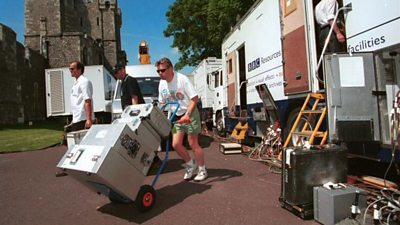
Broadcast Vehicles
A guide to satellite vehicles, radio cars and uplink vehicles -
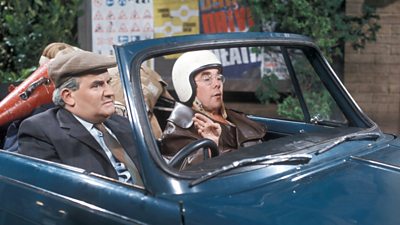
Driving & Cycling for Work
Our safety guideline to driving safely and legally on the public highway for the purposes of 91�ȱ� work. -
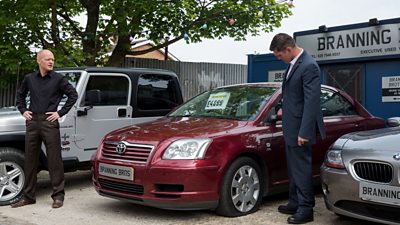
Safety Short: Vehicle checks
91�ȱ� Safety's Safety Short on Vehicle Safety Checks. -

Tail Lifts
91�ȱ� Standard and Guidance on the safe use of vehicle tail lifts -
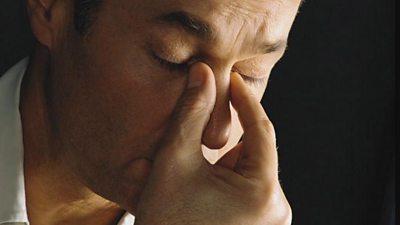
Tiredness and Fatigue
A guide to the scheduling and management of your team’s working hours. -

Vehicles: Recording in, from and around
A guide to recording a driver or passengers from within a moving vehicle. -
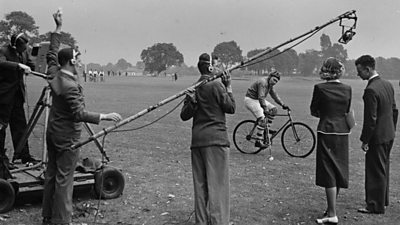
Vehicles Used in Sports Coverage
A guide to the safe use and provision of vehicles used in sports coverage, including quad bikes and golf buggies. -
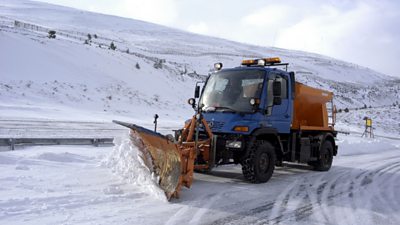
Winter conditions - driving and location safety
This safety guidance covers the additional risks to driving during harsh winter conditions in the UK.
More from SSR
-
Your platform to record accidents, risk assessments, assurance monitoring and inspections
-
Safety Equipment Stores
Just one number to call: 020 3614 5155 -
91�ȱ� Safety Guidelines
An A-Z of 91�ȱ�'s Health and Safety Guidelines -
Safety Advice Line: 0370 411 0464 Email: safety@bbc.co.uk
Events guidance - key links:
- Exhibitions
- General Guidance
- Indoor Location Recce Checklist
- Outdoor Location Recce Checklist
- Major Incidents & Emergency Planning
- Marketing and Promotional
- Noise Exposure
- Planning and Management
- Responsibilities
- Responsibilities Form
- Laser Lighting Effects
- Strobe Lighting
- Temporary Stages and Rostra
Health topics - key links:
- (91�ȱ� network only)
- Contributors Fitness to Participate
- Display Screen Equipment (DSE)
- (91�ȱ� network only)
- First Aid and Welfare on Location
- International Travel - Risks & Health
- Manual Handling
- Mental Health: 91�ȱ�page
- (91�ȱ� network only)
- Personal Health and Wellbeing
- Pregnancy
- Psychological Trauma Support & Trauma Risk Management (TRiM)
- Tiredness and Fatigue
- Travel Health Contacts
91�ȱ� High Risk - key links:
- CBRN and Industrial Spills
- Covert Filming
- Crisis Management and Security Support
- Demonstrations, Protests and Crowds
- Disaster Coverage
- Door Stepping
- (91�ȱ� network only)
- (91�ȱ� network only)
- Public Order
- Safety Equipment Stores
91�ȱ� Journalism - key links:
91�ȱ� Productions - key links:
- Aerial Filming and Airfields
- Animals: Displaying and handling for performance
- Boats: Working on
- Children and Young People
- Driving
- Electrical Equipment and Systems
- First Aid and Welfare on Location
- Food Safety (Cooking and Catering)
- Remote Location Working
- Roads and Streets: Working by
- Security of Productions on Location
- Stunts
- Tiredness and Fatigue
- Unmanned Aerial Systems (UAS aka Drones)
- Vehicles: Recording in, from and around
- Working at Height: Mobile Elevating Work Platforms
- Working at Height: Tower Scaffolds
91�ȱ� Radio - key links:
- (91�ȱ� Network only)
91�ȱ� Security - key links:
91�ȱ� Sport - key links:
About this site
This site describes what the 91�ȱ� does in relation to managing its health, safety and security risks and is intended for those who work directly for the 91�ȱ�.
It is not intended to provide instruction or guidance on how third parties should manage their risks. The 91�ȱ� cannot be held liable for how this information is interpreted or used by third parties, nor provide any assurance that adopting it would provide any measure of legal compliance. More information
Some links on this site are only accessible when connected to the 91�ȱ� network
